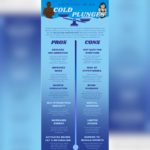If the events over the last couple years have shown us anything, it’s that stress manifests differently in each of us, be it physical, mental and/or emotional. It is what we experience when perceived demand exceeds accessible resources. This is competing deadlines at work without support; conflicting family schedules when childcare is limited; and others’ requests for your help when you need an assist or two yourself. Rather than juggling these burdens, try de-stressing techniques to free up headspace and find inner calm.
The American Institute of Stress1 reports that common reactions to a stressful event can include:
- Disbelief, shock and numbness
- Feeling sad, frustrated and helpless
- Difficulty concentrating and making decisions
- Headaches, back pains and stomach problems
- Smoking or the use of alcohol or drugs
But stress is unavoidable. So how do we cope with that which we cannot control?
Identifying your triggers and recognizing your breaking point is an important first step. Does ailing Aunt Jane frequently petition your help with her household chores when you can barely keep up with your own? Maybe you have trouble saying ‘no’ and prioritizing your own needs first. Do family gatherings with debating talk of politics take you over the edge without fail? Maybe you begin to feel overwhelmed and react in anger. Or maybe you instead retreat into yourself and shut down. Looking inward to honor your needs is key to beginning your journey toward well-being.
7 De-Stressing Techniques
Next is to have an arsenal of de-stressing techniques ready to pull from your bag of fortitude. Dialectic Behavioral Therapy (DBT) teaches skills that address different types of stress, such as emotion regulation, distress tolerance, core mindfulness and interpersonal effectiveness.2 There are about two dozen skills under DBT treatment methods. I’ve compiled seven de-stressing techniques, largely under the distress tolerance skillset, that I find most helpful in keeping me well balanced.
- BREATHE RHYTHMICALLY3 to get to a safe, self-compassionate place. This practice is effective in all levels of distress. Try it:
- Sit straight with your feet flat on the ground, close your eyes, relax your face into a soft smile.
- Bring your attention to your breath. Don’t try to alter it, just notice your natural inhales and exhales as they come.
*If your mind wanders, just notice it and return attention to your breath without judgement. - Allow your inhales to deepen, breathing down into your diaphragm. Exhale fully in a similar slow way.
- Find a slow, even rhythm of deep inhales and deep exhales. Don’t force it, just allow the body to find this deeper rhythm.
- Now add space between your inhales and exhales. For instance, breathe in for 3 counts, pause for 1 count, breathe out for 3 counts, pause for 1 count. Repeat for the next few minutes.
- Once you feel safe and soothed, gently return your breathing to a normal rhythm.
- Take a final, deep cleansing breath in, then out and gently flutter your eyes open to focus on your surroundings.
- RELAX MUSCLES when in physical distress (or when emotional distress is manifesting physically). This technique becomes more effective with practice and can be done in many settings. Try it first in a quiet place with little distractions, lying down flat on your back if that’s comfortable for you. The steps you see below will be repeated with different areas of the body, in deliberate succession, as listed in the box to the right. Here’s how:
Muscle Groups:
- Hands
- Shoulders
- Face
- Stomach
- Buttocks
- Thighs
- Calves & Ankles
- Feet
- Bring your attention to your [muscle group].
- Gather tension here by tightening the muscles.
- Hold that tension as you inhale for 5-6 seconds.
- Release your muscles and breathe out, saying the word “relax” in your mind.
- Repeat with the next muscle group until you’ve completed all 8. For a more advanced progressive muscle relaxation, use these muscle groups at University of Michigan Health.
- STOP to decrease impulsivity, accept reality and survive the moment. This is a 4-step emotion regulation skill to use when feeling overwhelmed.4Stop yourself from saying anything, reacting, moving. Just pause any escalation of the situation.
Take a step back think and calm down. You may need to use one of the breathing or muscle relaxation techniques from above.
Observe the facts of the situation. Who is involved and what are they actually doing/saying?
Proceed mindfully, from a balanced, grounded place. Identify what you want as an outcome and what actions would be appropriate to effectively get that outcome.
Example: You’ve just been asked to add another major project to your workload. You’re already struggling to meet current work demands since you’re covering for an empty position within your department. With your manager before you, you can feel the heat rise up in your chest and the tears well up in your eyes. But you don’t need to crumble. You can step away and compose yourself, identify your true feelings, and then proceed with a constructive conversation with your boss later on. Maybe say, “I’d like some time to think about how to work that in. I may need help prioritizing my current projects. Can I come back to you later to discuss further?”
- GROUND YOURSELF to help redirect your thoughts away from distressing feelings and back to the present.5 Healthline presents 30 grounding exercises, using mental distractions, categorized into physical, mental and soothing techniques. Here are 6 of my tried-and-true favorites:PHYSICAL | Hold a piece of ice. Tune in to how it feels at it starts to melt in your hand.
PHYSICAL | Identify 2-4 different sounds you hear, reminding you where you are.
MENTAL | Play categories. Choose a broad one, like ‘musical instruments,’ and list as many as you can in 2 minutes.
MENTAL | Describe a task you perform frequently, step-by-step.
SOOTHING | Picture the voice or face of someone you love, vividly.
SOOTHING | List your favorite things in different categories, like foods, songs, movies.
- SELF-SOOTHE to feel comforted, relieve stress and pass time without escalating a stressful situation. You’ll want to soothe each of your five senses by fully experiencing the sensation. Here are my picks for you:Sight – Look at a piece of art that you find exquisite. It could be a photo or the real thing. A canvas, a sculpture, your child’s fingerpainting. If it brings you visual joy, you’ve chosen the right piece! Don’t just glance – really take it in and observe the feelings it conjures over a period of time.
Sound – Hum a soothing tune, like your favorite song or a nursery rhyme. Feel the vibration in your chest as you hear it in your ears. Repeat several times.
Smell – Apply your favorite-scented lotion or aftershave. Inhale deeply as it absorbs into your skin and experience the sensations in your nostrils. Repeat deep inhales at different points throughout the day as the scent dissipates and compare the sensations.
Taste – Choose something to eat, to experience, mindfully. Really taste it, savor it and notice the sensations on your tastebuds. Be mindful of its taste, with each bite, until you’ve finished it.
Touch – Find 3 different textures to run your hands over. Maybe it’s a leather chair, a wooden shelf and a bag of beans! Consider the sensations of each and sit with that for a moment. Consider which texture you find more pleasurable. Maybe go back and experience that sensation when you feel the need to ground yourself in the moment.
- RADICALLY ACCEPT stressful situations when they are inevitable. This is a tough one. It means accepting the painful problem with your mind, heart and body, without fighting or resisting it and without judgement. While accepting the distress may lead to sadness, calmness usually follows. You have 4 options when faced with a problem6:
- Solve it
- Change how you feel about it
- Accepting it – RADICAL ACCEPTANCE!
- Do nothing and stay miserable
Rejecting reality does not change reality and often turns pain into suffering. Radical acceptance eases suffering and leads to swifter peace.
- COPE AHEAD for an anticipated stressful event so you’ll be prepared if triggered. Try this in advance:
- Describe the situation that is likely to cause you high stress. Be specific: name the emotions you are afraid you might feel and the undesirable actions you are afraid you would take.
- Develop ways to cope in advance (use the de-stressing techniques below).
- Visualize the situation vividly, while rehearsing your coping skills in your mind.
- Practice relaxation techniques after rehearsing to come down from any upset the visualization may have brought up for you.
Here is a real-life example… When COVID cases are high, even though I’m vaccinated, I am nervous in crowds. Honestly, I’ve always been nervous in crowds because (1) I don’t feel safe or that I have control of my surroundings; (2) I’m short, thus feel physically overpowered by others standing close to me; and (3) I don’t want to contract COVID, which I’m more susceptible to due to an auto-immune disorder. So when a large event comes up that I don’t want to miss, yet know will be crowded, I’m conflicted. In using the “cope ahead” steps above, I employ this strategy:
- Wear an aromatherapy necklace with relaxing scents to ease any tension in the moment.
- Carry my COVID-19 Safety Kit for sanitation and a sensory gadget to release any nervous tension.
- Arrive early to scope out the setting, knowing where the exits are, bathrooms and areas to sneak away and steal a moment to myself if needed.
- Be prepared with how to alert the host and bow out if I feel too uncomfortable.
In this scenario I am prepared in advance to face common triggers and give myself a shot at stress-free fun!
April is Stress Awareness Month, which is why I share this with you today. But every day is a good day to try these seven de-stressing techniques.
1 The American Institute of Stress, https://www.stress.org/april-is-stress-awareness-month
2 DialecticalBehaviorTherapy.com, https://dialecticalbehaviortherapy.com/
3 DBT & Mental Health Services, https://www.mhs-dbt.com/blog/pain-relaxation-script/
4 DBT.tools, https://dbt.tools/emotional_regulation/stop.php
5 Healthline, https://www.healthline.com/health/grounding-techniques
6 DBT Self-Help, https://dbtselfhelp.com/dbt-skills-list/distress-tolerance/radical-acceptance/














